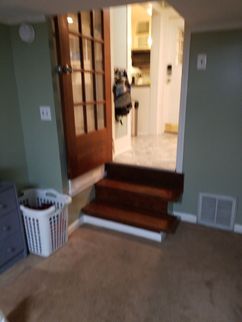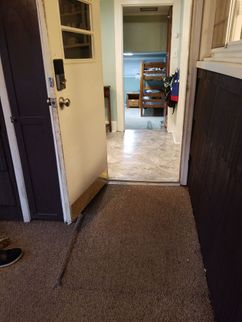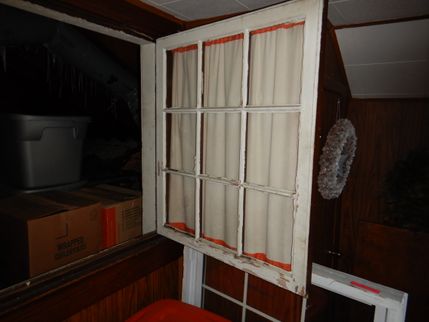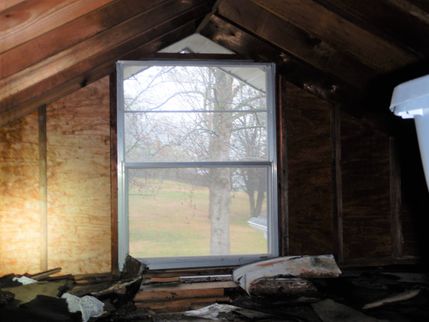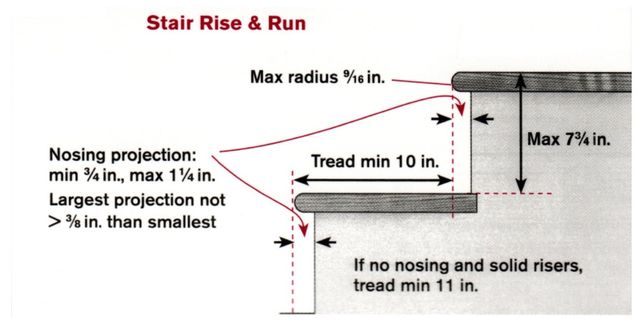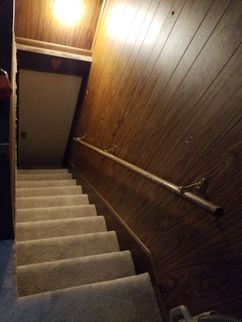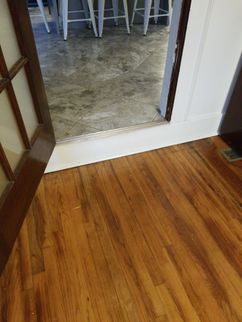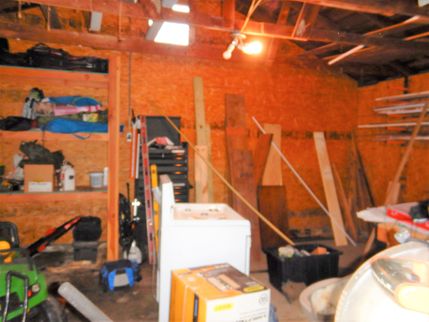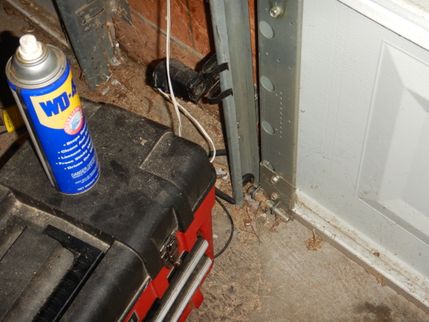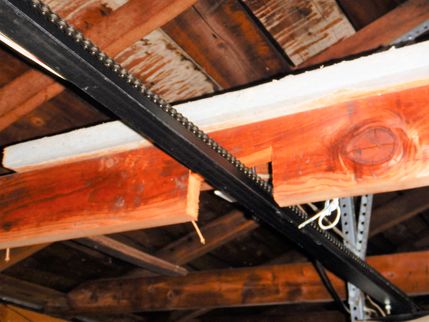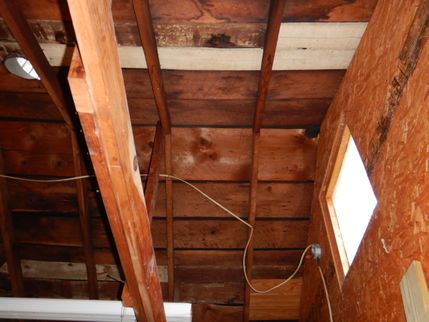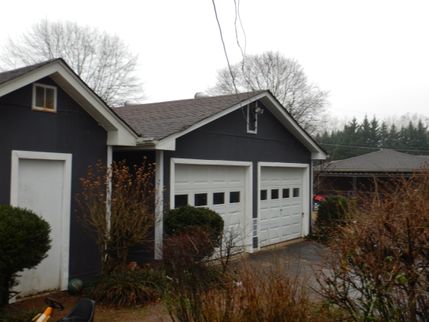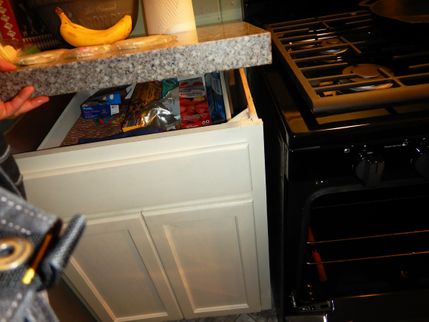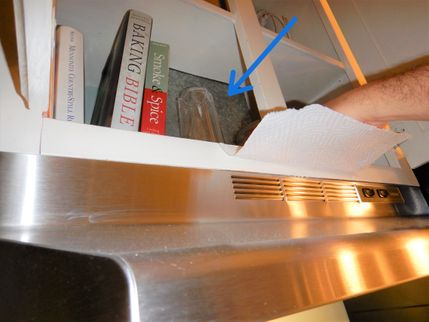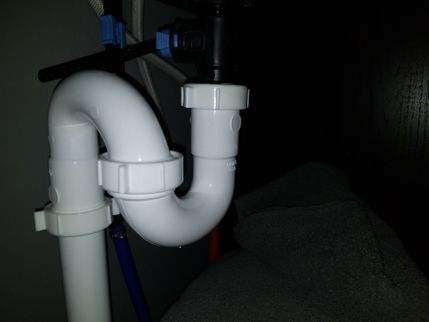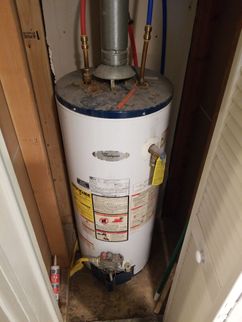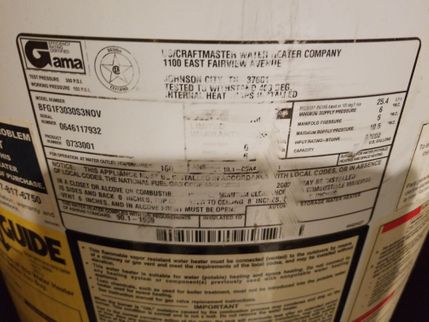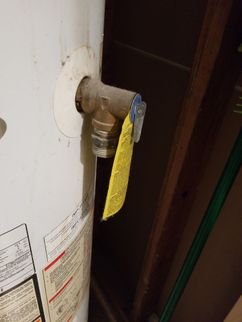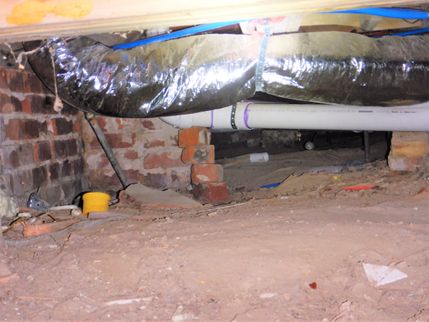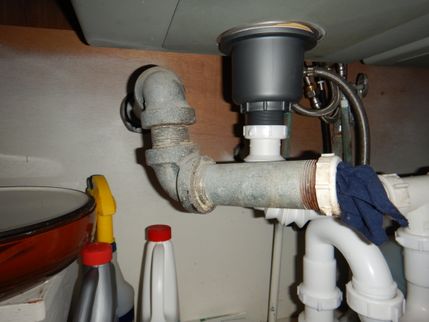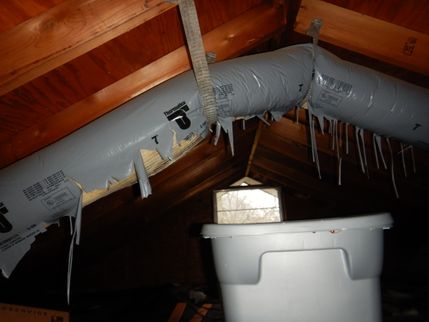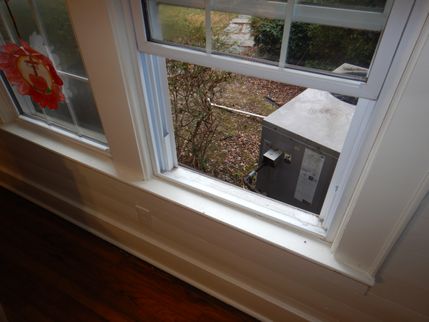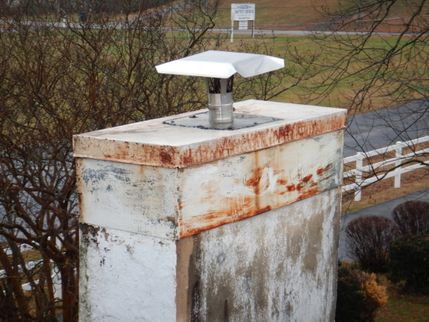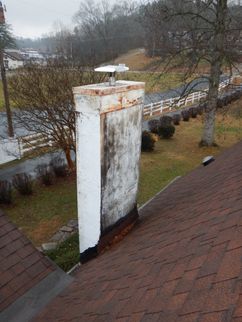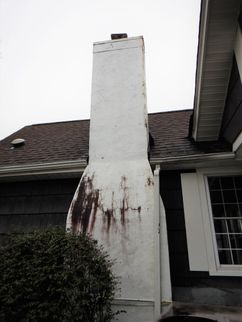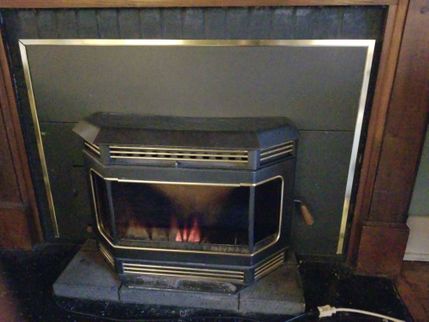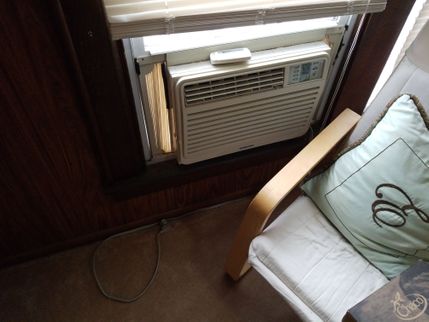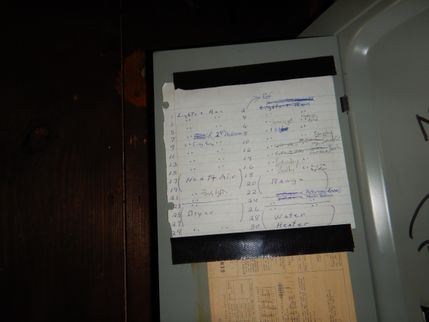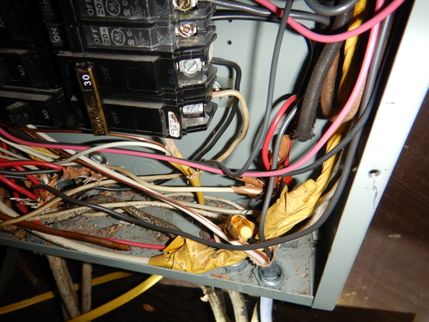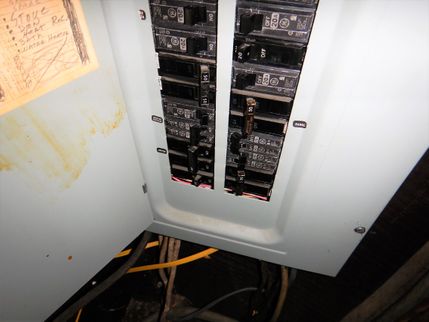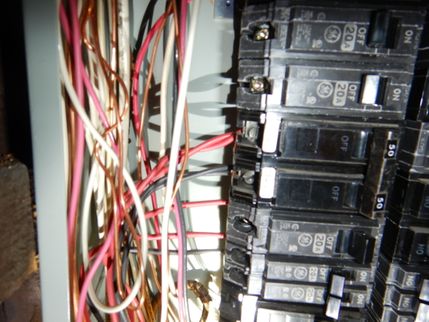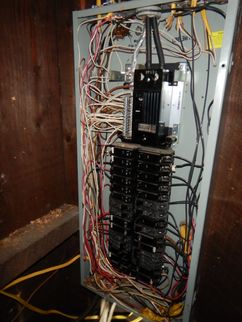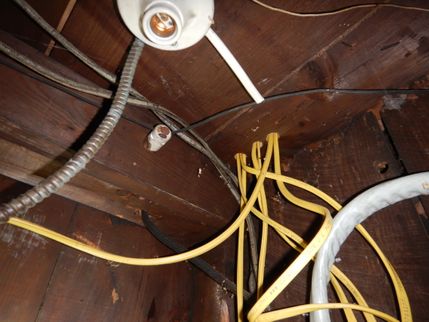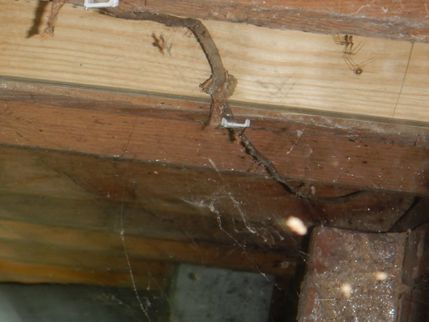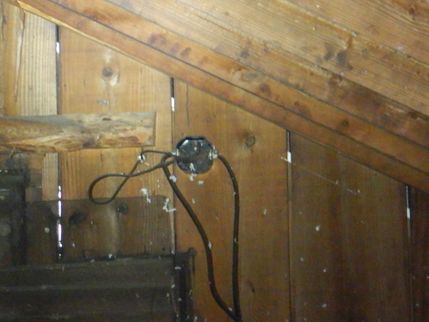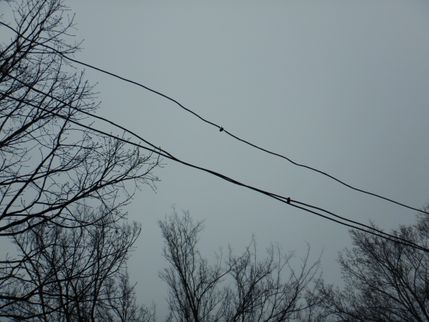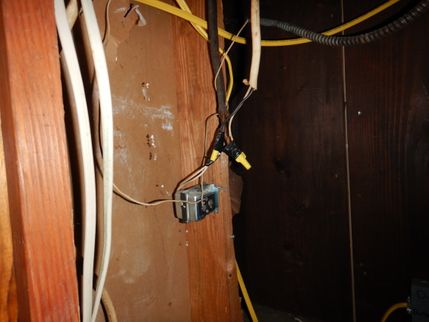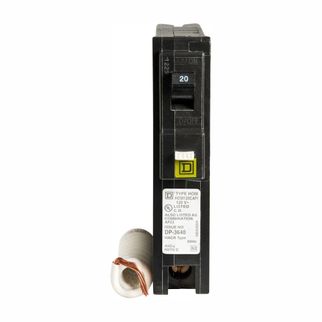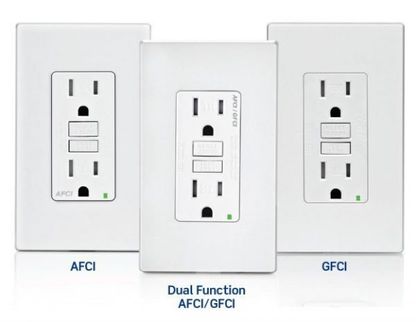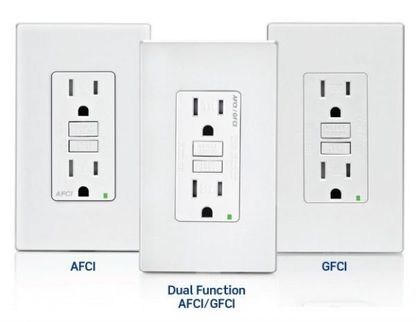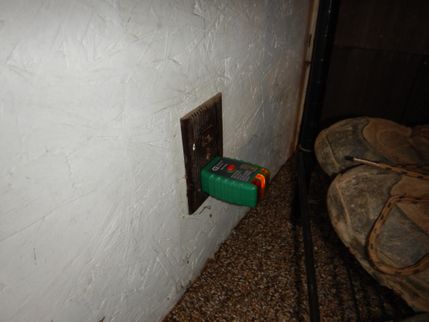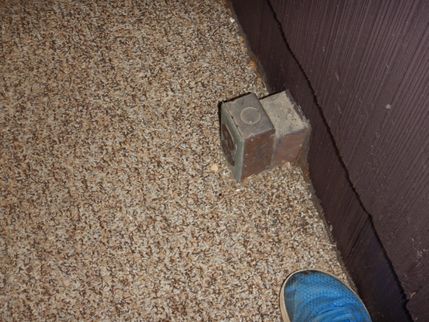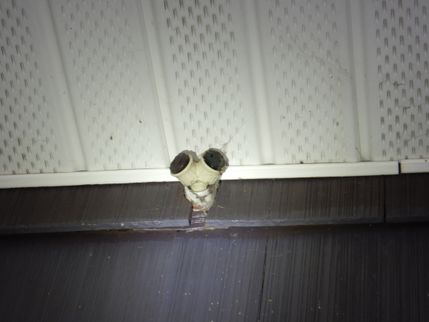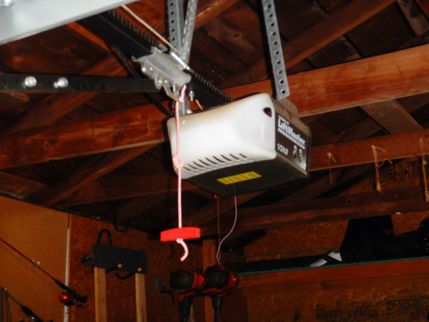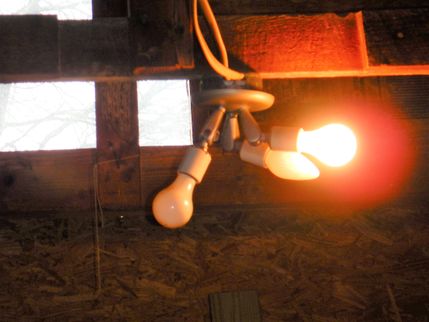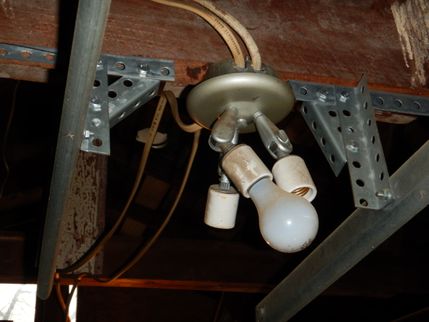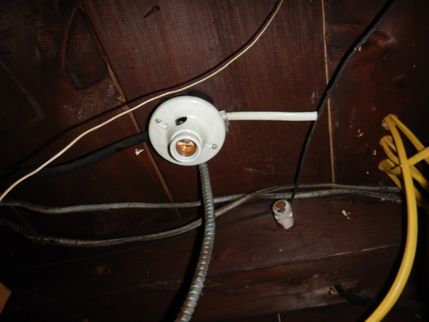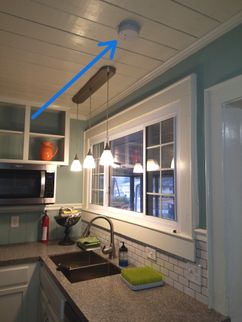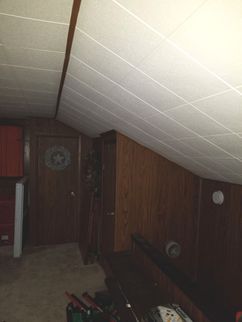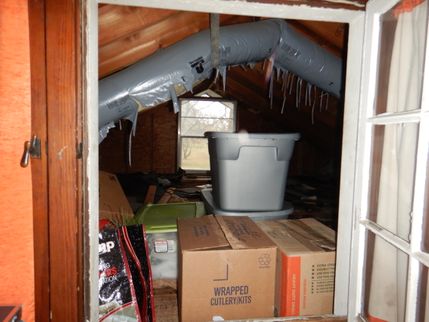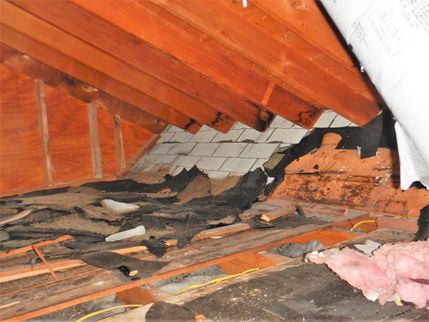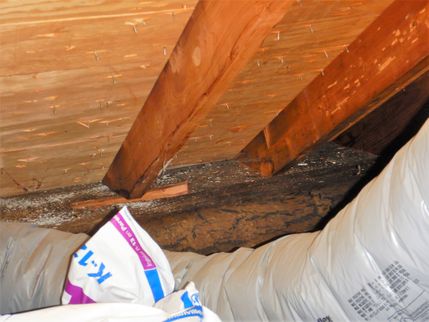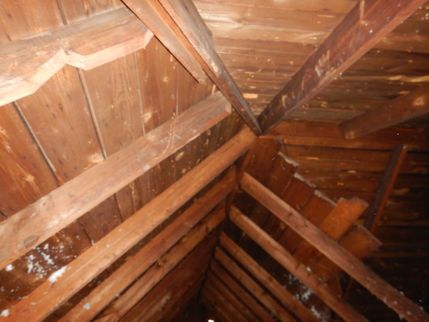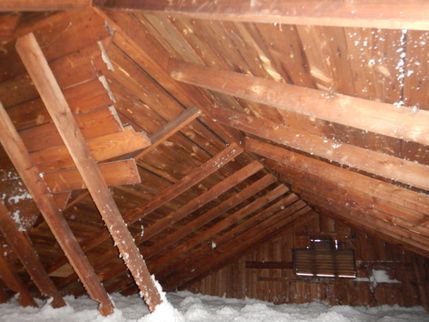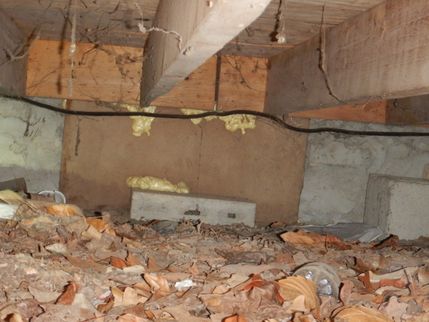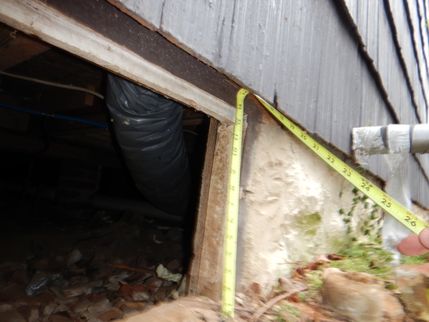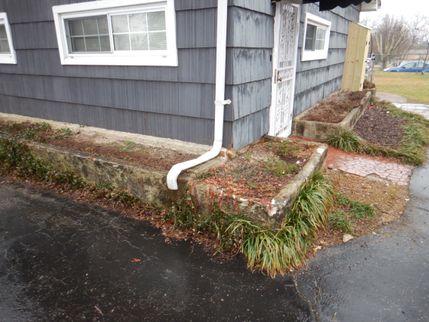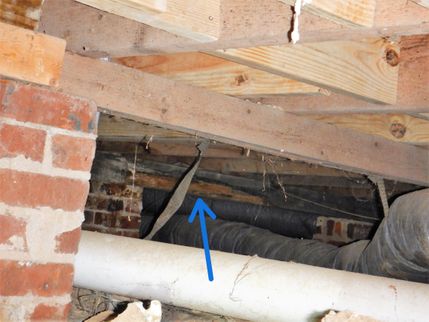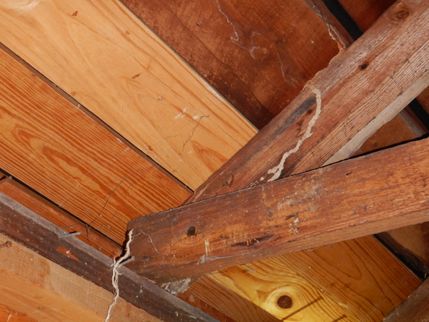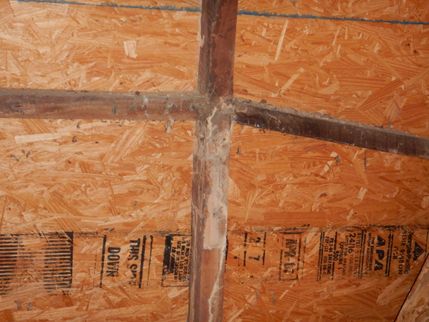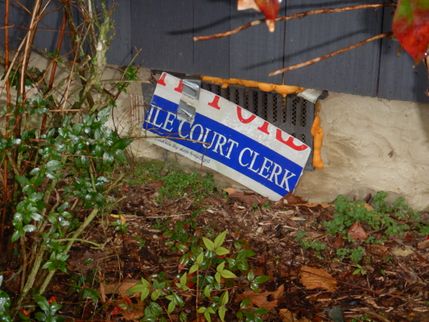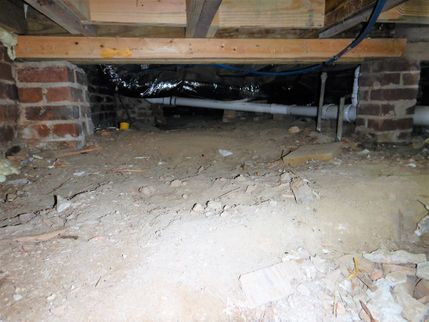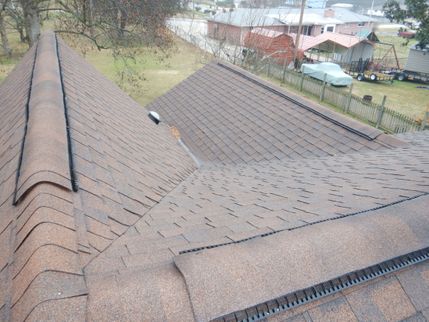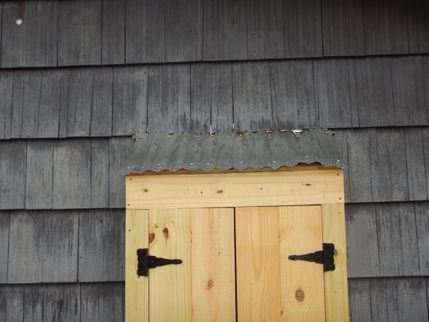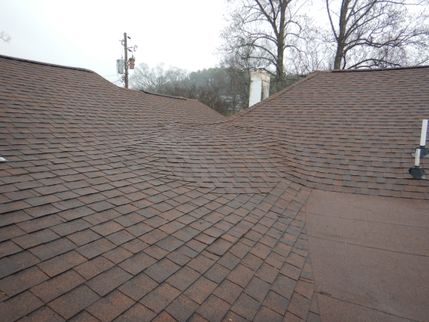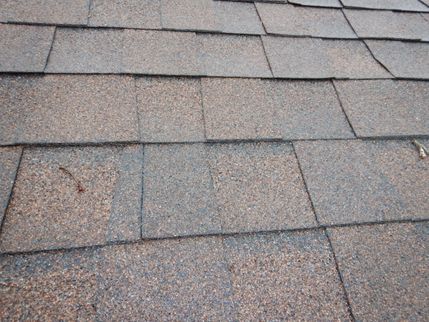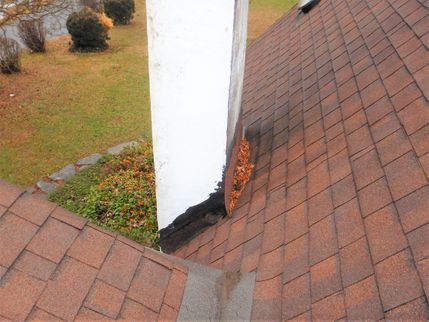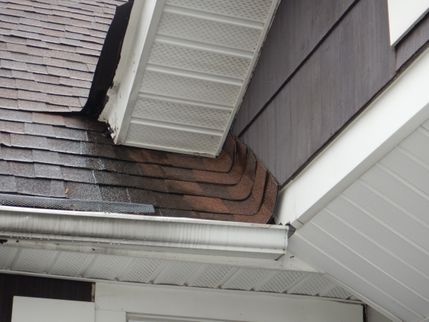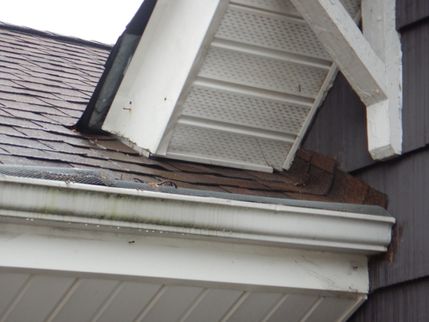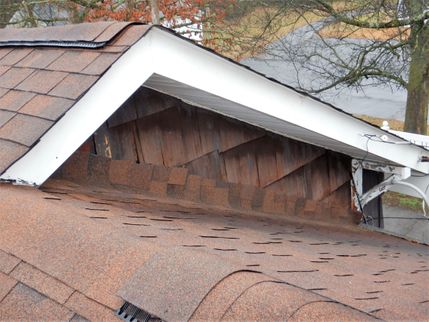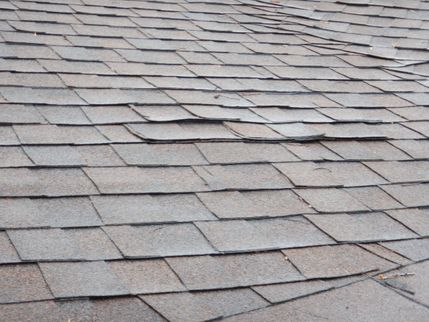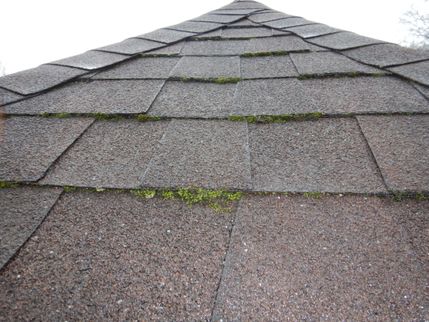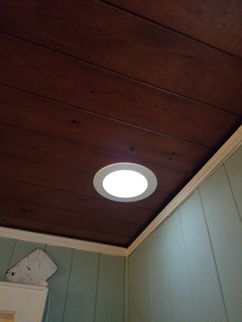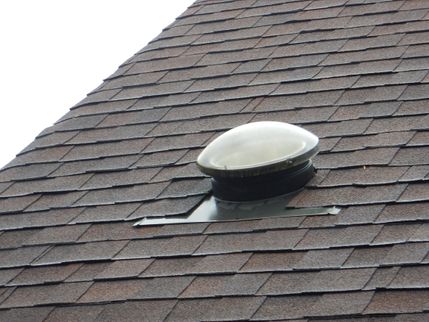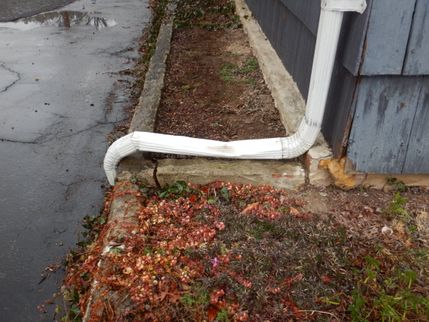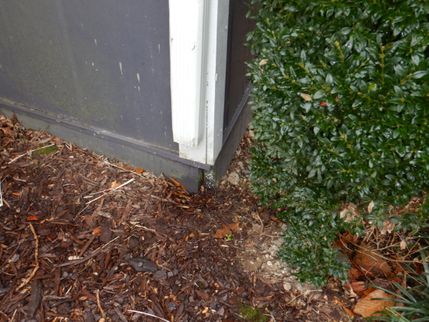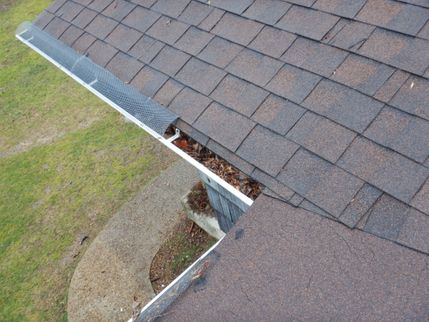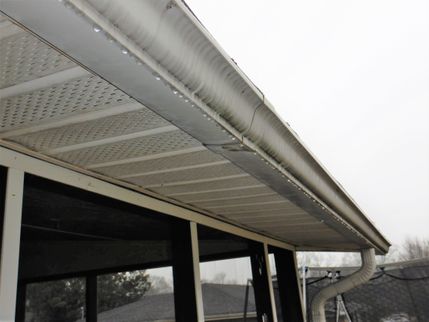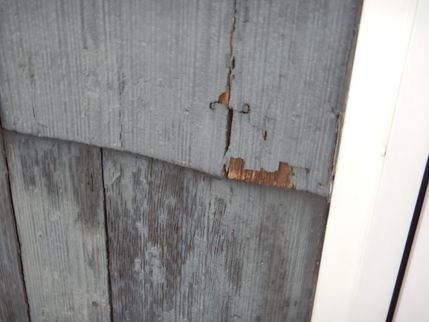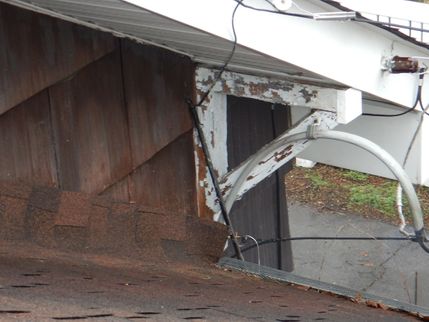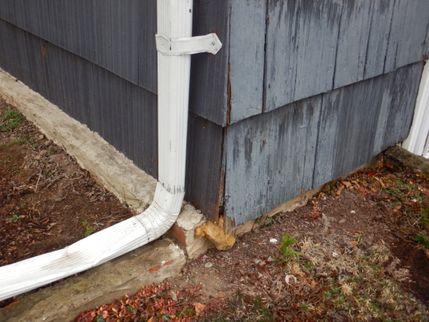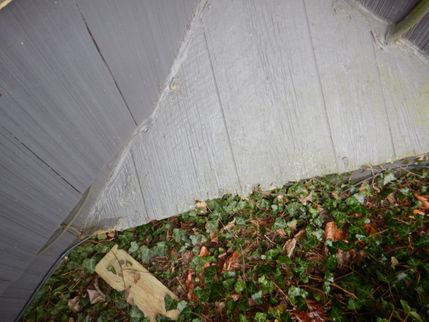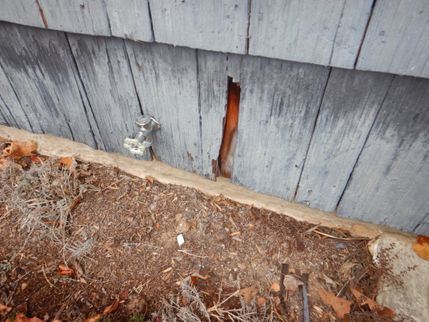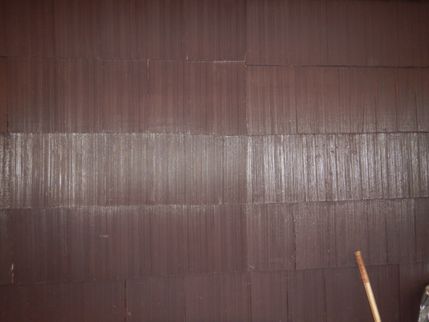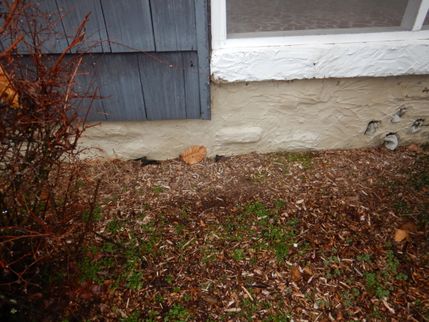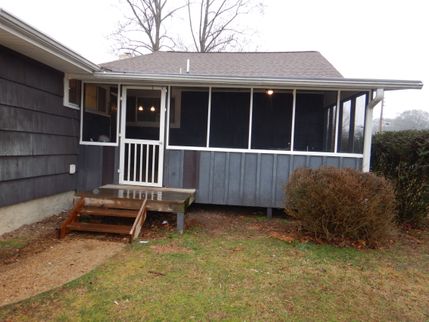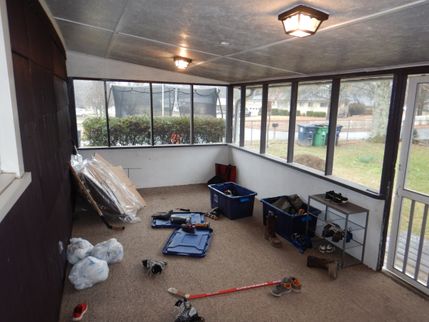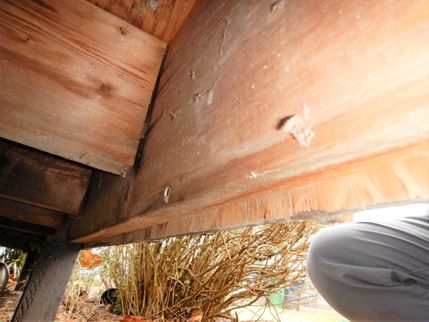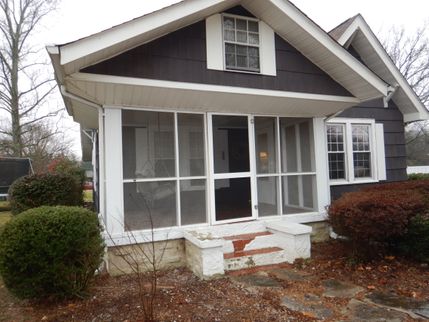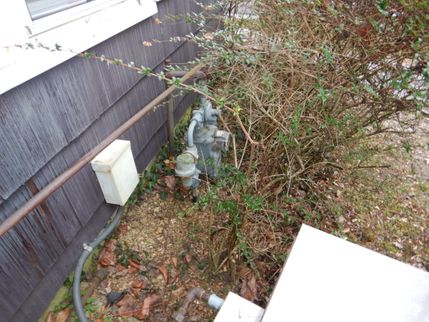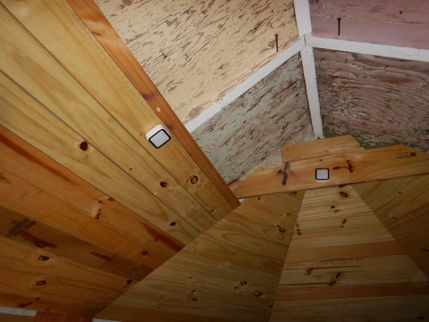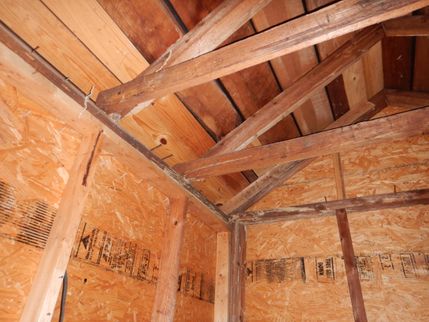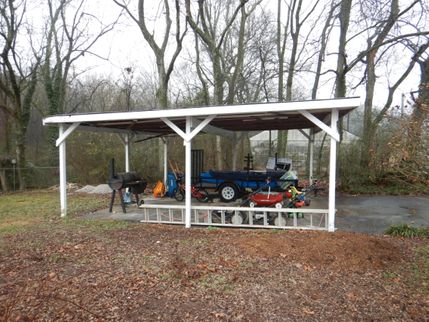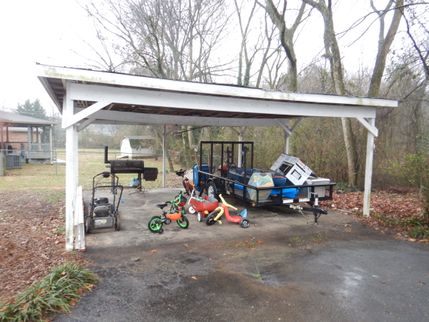The Scope and Purpose of this Inspection
The scope of this inspection
INSPECTION AGREEMENT
Major Structural and Electromechanical Inspection
HomePro Inspection, Inc. agrees to conduct an inspection for the purpose of informing the CLIENT of major deficiencies in the condition of the property in accordance with the Standards as set forth by the American Society of Home Inspectors (ASHI) and the State of Tennessee. The inspection and written report are performed and prepared for the sole, confidential and exclusive use and possession of the CLIENT; the report is nontransferable.
The written report will include the following only:
- general exterior, including roof, siding, windows, chimney, drainage and grading
- structural condition of foundation & frame
- electrical, plumbing, hot water heater, heating and air conditioning
- general interior, including ceilings, walls, floors, windows, insulation and ventilation
Maintenance and other items may be discussed but they are not a part of the inspection. The report is not a compliance inspection or certification for past or present governmental codes or regulations of any kind and is only based on the inspector’s opinions.
It is understood and agreed that the inspection will be of readily accessible areas of the building and is limited to visual observations of apparent conditions existing at the time of the inspection only. Latent and concealed defects and deficiencies are excluded from the inspection; equipment, items and systems will not be moved or dismantled. When the inspection is for only one or a limited number of systems or components, the inspection is limited to only those systems or components that were inspected. Detached structures are not included. HomePro Inspection, Inc. will be under no obligation under any circumstances for any further follow-up inspection.
ENVIRONMENTAL HAZARDS including Asbestos, Mold, Fungus, Lead, Radon, Cockroaches, Rodents, Pesticides, Treated Lumber, Mercury, Carbon Monoxide, Urea Formaldehyde, Toxic Wastes, Polluted Water, Contaminants and all Pollutants and Hazardous Materials or other similar environmental hazards are not part of this Home Inspection. In addition, no inspection for household insects or unwanted animals will be done.
This report does not address Subterranean Systems or system components for Sewage Disposal, Water Supply, or Fuel Storage or Delivery. Auxiliary systems such as Alarm, Security, Intercom, other low voltage wiring, Generator, Private Water, Sprinkler, Elevator, Central Vacuum, Refrigerators, Laundry Equipment, Solar, Swimming Pools, Hot Tubs, Saunas, Space Heaters, Window Air Conditioners and or any system not considered a part of the major building systems are not a part of the inspection process.
The parties agree that the HomePro Inspection, Inc., and its employees and agents, assume no liability or responsibility for the cost of repairing or replacing any unreported defects or deficiencies, either current or arising in the future, or for any property damage, consequential damage or bodily injury of any nature. THE INSPECTION AND REPORT ARE NOT INTENDED AS A GUARANTEE OR WARRANTY, EXPRESSED OR IMPLIED INCLUDING REGARDING THE ADEQUACY, OR PERFORMANCE OF ANY INSPECTED STRUCTURE, ITEM OR SYSTEM. THE HOMEPRO INSPECTION, INC. IS NOT AN INSURER OF ANY INSPECTED CONDITIONS.
It is understood and agreed that should HomePro Inspection, Inc. and/or its agents or employees be found liable for any loss or damages resulting from a failure to perform any of its obligations, including but not limited to negligence, breach of contract or otherwise, then the liability of HomePro Inspection, Inc. and/or its agents or employees, shall be limited to a sum equal to the amount of the fee paid by the CLIENT for the Inspection and Report.
The parties agree that the faxed or digital copy of the agreement is to be relied upon in lieu of the original.
Acceptance and understanding of this agreement are hereby acknowledged:
How to Read This Report
This digital report or a printed version of this report should only be viewed in full color where the photos are discernible and on a device where the report page width is no less than 8.5" wide. Please note, Right and Left of the building are determined as facing the front of building shown on the report cover. The client has the duty and obligation to read the entire report. Feel free to reach out to the inspector should you have any questions or concerns.
This report is designed to inform the client of obvious major structural deficiencies, inoperative conditions and the presence of noticeable, detrimental moisture issues for areas inspected. Additionally, the inspection report may advise regarding notable safety concerns and appropriate upgrades recommended by the inspector that you should consider and act on when appropriate. Please note, undesirable conditions pertaining to this inspection may be present and unreported for concealed areas and areas with limited or blocked access.
Photos
Photos included in this report are intended to help describe a reported item or area only. The photos, while representative, may not encompass the full scope of work required to correct the item or area listed. Repairs should be based on actual condition of property and not solely on the photos included in this report.
Repairs
Repairs or corrections needed at the inspected property should be completed by competent qualified professions familiar with the type of work being performed. Obtain competitive bids as needed. Obtain further evaluation when needed.
Getting the Information to You
This report is designed to deliver important and technical information in a way that is easy to access and understand. The best way to get the layers of information that are presented in this report is to read your report online in the HTML format, which will allow you to expand your learning about the inspected property. You will notice some words or series of words highlighted in blue and underlined – clicking on these will provide you with a link to additional information, if desired. Other text colors, if present, have no real meaning. Please read all written text.
This report can also be printed on paper or to a PDF document.
Chapters and Sections
This report is divided into chapters that parcel the home into logical inspection components. Each chapter is broken into sections that relate to a specific system or component of the home. You can navigate between chapters with the click of a button on the left side margin when viewing the report online.
Observation Labels
Narrative observation labels are defined here. Some of the following observation labels may not appear in all reports. Hazardous, Key Concerns and Further Evaluation observation label types, if used, will appear in the report and in the summary. All other observation labels, when used, appear only in the report and will not appear in the summary. All narrative observation label types are labeled, and numbered to help differentiate each reported narrative observation. When narrative observation labels are given a color, the specific color used has no meaning. Some observation labels are given a specific icon to group the observation types. The specific icon used also has no meaning.
Observation labels and colors used for reporting are:
- Hazardous:Observations listed as hazardous pose imminent danger to the inspected property or occupants. Hazardous observations should be properly corrected before occupying the property. When used, this observation will appear in the report and in the summary.
- Key Concerns:Observations listed as key concerns will typically include inoperative equipment, common and significant corrections needed for plumbing, electrical, heating/cooling, structure, interior and exterior areas including the roof covering. When used, this observation will appear in the report and in the summary.
- Further Evaluation:Observations listed as further evaluation need a more extensive or technically exhaustive evaluation. For areas where corrections may not be straight forward or where a proper plan should be developed to implement corrections, then further evaluation is recommended. To obtain further evaluation is to hire a specialist that is highly experienced in the repair or correction of a specific item or area. Some observations listed under other labels that also require further evaluation will appear under the other label only. When used, this observation will appear in the report and in the summary.
- Periodic Maintenance Needed:Observations listed as periodic maintenance needed are items or areas that are expected to have maintenance performed at some interval. Maintenance neglect may be from lack of maintenance knowledge or lack of adequate funding for periodic maintenance. Some irregular or substandard installations may need more frequent maintenance until properly replaced. Start dates and intervals for periodic maintenance are a matter of personal judgment. When used, this observation will appear only in the report.
- Safety Concerns:Observations listed as safety concerns are items or areas listed to help reduce the risk of personal injury. Safety standards and expectations change. Consideration should be given to evaluate and act upon your risk exposure to help reduce the risk of personal injury. Some observations listed under other labels that are also safety concerns will appear under the other label only, such as electrical repairs, which almost always pose some safety risk. Some safety concerns may also be considered improvements but will fall under the safety concerns label if deemed more appropriate. When used, this observation will appear only in the report.
- Routine Correction Needed:Observations listed as routine correction are not unusual for the type and age property inspected. These routine items are typically not recurring and once properly corrected should not require repetitive correction. When used, this observation will appear only in the report.
- Monitor:Observations listed as monitor are typically items or areas that need subsequent observations and should be monitored over time to obtain historical data. These items may or may not require correction in the future based upon their performance over time. If you are unable to do the monitoring, the inspector recommends you appropriately schedule monitoring by a qualified competent contractor. Some observations listed under other labels that also may require monitoring will appear under the other label only. When used, this observation will appear only in the report.
- Improve:Observations listed as improve are items or areas that were ready for improvement or upgrade. This label is used for predictable expected opportunities to better the property condition or installation deficiencies that may or may not affect equipment function. Some observations listed under other labels that also may be considered improvements will appear under the other label only. When used, this observation will appear only in the report.
- New Construction Builder Punch List Item:Builder punch list items are routine and incomplete items and areas observed at a new construction property that likely would not be listed in the summary of the report if it were not a new construction property. Builder punch list items appear in the summary of the report to help the client remind the builder of an incomplete or routine item or area that should be properly addressed.
- Note:Notes are general remarks or comments elaborating on descriptions of systems, limitations, restrictions, or other similar conditions present during the inspection. Notes do not appear in the summary.
- Inspector Informational Note:Inspector informational note regarding inspection process.
- Description:Descriptive information for various aspects of the property, equipment, items, or areas noted during the inspection. Descriptions do not appear in the summary.
- Deck Description:Description of observed deck conditions and issues.
- Bathroom Description:Description of Bathroom features. When used, this observation will appear only in the report.
- Central Heating/Cooling Description:Description of Central Heating/Cooling. When used, this observation will appear only in the report.
- Kitchen Description:Description of Kitchen features. When used, this observation will appear only in the report.
Summary Page
For convenience, the report contains a summary. Be advised, the summary contains only the observations listed as Key Concerns, Further Evaluation Needed, and Hazardous. The summary alone is available at our "Summary Page”. Please understand that you have a duty and obligation to read the full report which contains all of the information and is available at Report. The full report includes full descriptions, digital photographs, captions, and when applicable, diagrams, videos and hot links to additional information.
This report can also be printed on paper or to a PDF document.
Summary
Key Concerns
- G1-1 Garage:
Detached Garage
Garage observed in poor condition. Properly recondition garage or remove garage for safety.
- K-2 Kitchen:
Sink Main Level ──── ──── ────
An outdated S type waste trap was observed at plumbing waste drain. A modern properly installed P trap is recommended to prevent siphoning of water from trap and possible sewer gas entry into building.
- B-1 Bathroom:
Sink Main Level Master ──── ────
Sink was loose. Properly secure sink as needed to help prevent leaks
- B-2 Bathroom:
Sink Faucet Main Level Master ──── ────
Vanity cabinet was loose and should be properly secured in place to help prevent unwanted leaks.
- B-3 Bathroom:
Sink Main Level Rear ──── ────
An outdated S type waste trap was observed at plumbing waste drain. A modern properly installed P trap is recommended to prevent siphoning of water from trap and possible sewer gas entry into building.
- B-4 Bathroom:
Rear Bathroom Tub Faucet was extremely difficult to rotate.
Properly correct faucet for correct function.
- P2-1 Plumbing:
Water Heater ──── ────
Water heater did not appear to meet manufacturer installation standards for proper installation when inspected. Refer to installation instructions and have a competent contractor correct as needed for function and safety.
- P2-3 Plumbing:
One exterior hose faucet at left side of home was observed inoperative when inspected. Properly correct or replace as needed.
- CHC-1 Central Heating/Cooling:
Irregular duct installation was observed and further evaluation of system is recommended. Properly correct heating and cooling system installation to meet your needs.
- Some ductwork was installed at interior walls rather than near exterior walls.
- No air flow was observed at ductwork serving upstairs area.
- Ductwork visible at attic area was damaged and ready for replacement.
- Ductwork observed on floor at crawl space
- Ductwork was ready for cleaning
- G-1 Gas:
Gas Piping
Irregular gas piping was observed. A competent qualified pipe fitter should review all areas of gas piping installation. Properly replace or correct gas piping as needed for safety and function before use.
- Gas piping was not properly identified.
- Gas piping was not properly protected from damage.
- Gas piping was not properly supported where needed.
- Sediment traps for gas piping needed correction.
- G-2 Gas:
Gas Piping ──── ────
A sediment trap was not visible at gas piping near gas appliance. Properly add where needed.
- Sediment trap for gas water heater was not visible.
- Sediment trap for gas furnace was installed inline rather than with change of direction at gas piping.
- E4-1 Electrical:
Electrical Service
Observed electrical service should have unobstructed, dedicated safe service access area of no less than 30" in width and 36" depth as measured out from the inspected electrical panel. This clear area is needed for safe access to this type of equipment. Consider relocating equipment or obstruction as needed to provide minimum safe working access to electrical service.
- E4-2 Electrical:
Electrical Panel was installed inside a cabinet or very small closet
Multiple corrections were needed at electrical distribution panel. A competent electrical contractor should further evaluate this area. Make proper corrections as needed for safety and function now. Refer to the full report for additional information and photos regarding obvious corrections recommended for this electrical panel.
- E4-3 Electrical:
Branch Wiring
Multiple corrections were needed to improve the safety of the electrical branch wiring. These corrections are usually non-recurring once properly completed. A competent electrical contractor should review the installed branch wiring making proper corrections where needed for both safety and function.
- Representative photos provided
- E4-4 Electrical:
Improper wiring observed at electrical receptacle. Make electrical receptacles functional and safe where needed.
- Improper wiring observed at electrical receptacle at rear exterior deck which is a damp location by definition.
- E4-6 Electrical:
Some lighting was inoperative when inspected. Some light fixtures were improperly installed. Check all lighting/fans making functional and safe where needed.
- Representative Photos Provided
- S-1 Structure:
Further evaluation of roof framing system was needed. Conditions observed at roof framing that warrant further evaluation by a specialist. A competent qualified contractor should further evaluate entire roof framing system and all supports determining corrective measures needed, take action to prevent recurrence and properly repair affected areas where needed.
- Roof framing was outdated, irregular and appeared to have multiple additions.
- Representative photos provided
- Coordinate roof framing corrections needed now with roof covering corrections needed now
- S-2 Structure:
Crawl space access opening was much smaller than the minimum needed safe opening of 16 inches by 24 inches for access to the crawl space area. Crawl space area was not entered. The inspector recommends installing proper access for crawl space area and having inside of crawl space area evaluated.
- Possible abandoned crawl space access was sealed.
- Crawl space access was only 12" tall. Crawl space was not entered. Crawl space was viewed from access opening only.
- M-1 Moisture:
Plastic sheeting, vapor retarder was not observed properly covering soil areas inside the underfloor crawl space. A vapor retarder is an important measure to reduce moisture inside underfloor crawl spaces and should be properly added to cover soil areas where omitted or missing.
- R-1 Roof:
Roofing was ready for corrections now. A competent roofing contractor should check entire roof system and associated flashings. Repair or replace roof covering system as needed.
- Some Shingles were worn
- Irregular shingle installation observed at areas
- Temporary repairs observed
- Proper flashing was omitted at multiple areas
- Saddle flashing was omitted at chimney
- Low sloping metal roof at carport was improperly installed
- Metal roof at attached storage area was improperly installed
- Moss observed at roof covering
- Coordinate roof covering corrections needed now with roof structure repairs needed now.
- R-2 Roof:
Consider replacement of older roofing.
Weigh your options for repairing roofing now knowing that you should replace it in the near future with the option of proper complete replacement now. Considering that a properly replaced roofing system may last up to three decades it may make better sense to replace the roofing correctly now rather than to repair an older roof system that will have to be replaced soon anyway.
- DAWP-1 Deck Areas / Wooden Porches:
Deck areas were observed ready for corrections now and before use to improve the structure of the deck and to improve the safety aspects for the fall prevention measures installed at deck areas. Refer to the full report for additional information and photos regarding obvious corrections recommended now for any deck areas. A competent deck contractor should check all deck areas. Make deck areas functional, safe and structurally sound where needed.
Further Evaluations
- P2-2 Plumbing:
Plumber Evaluation needed - Plumbing system not working properly or incorrectly installed. Have Licensed Competent Plumbing Contractor evaluate entire plumbing system and properly repair or replace to make system functional and safe.
- Multiple S traps observed at waste piping
- Waste piping visible in crawl space was not properly supported and portions appeared irregular
- GAF-1 Gas Appliance Flue:
Furnace ──── ────
Gas appliance flue needed further evaluation.
The gas appliance flue arrangement appeared questionable. A competent heating technician should further evaluate and properly correct gas appliance flue as needed for safety and function.
- Gas furnace exhausted through dining room window into interior living area when dining room window was open.
- SH-1 Space Heating:
Fireplace chimney appeared irregular. Obtain further evaluation of chimney by a chimney specialist before use.
- Photos Provided
- SH-2 Space Heating:
Pellet Stove
Pellet burning stoves are outside the scope of this inspection and are not evaluated. Manufacturer's instructions must be closely adhered to and these instructions often vary by manufacturer. The inspector recommends further evaluation by a chimney specialist and a revue of installation and maintenance instructions before use.
- Do not use pellet stove until properly evaluated
- Do not use pellet stove until chimney is properly evaluated
- S-4 Structure:
Conditions observed at floor system warrant further evaluation by a specialist. A competent qualified contractor should further evaluate entire floor system and all supports determining corrective measures needed, take action to prevent recurrence and properly repair affected areas where needed. Making corrections for areas where needed now would help reduce predictable unnecessary settlement of structure.
- Floor framing appeared outdated or improper
- Portions of floor framing appeared damaged
- S-5 Structure:
Suspect termite activity observed at outbuilding.
The inspector recommends further evaluation by a specialist properly correcting as needed. An exterminator is needed to determine if termite presence is active or not. Often termite activity is related to a moisture condition. Properly correct any undesirable moisture conditions as needed.
- Suspect termite activity observed at outbuilding
General Comments
Building Characteristics, Conditions and Limitations
Type of Building : Single Family Home
Approximate Square Footage: 1500
Approximate Year of Original Construction: 1920
Weather during the inspection: Light Rain
Approximate temperature range during the inspection: 32-59[F]
Ground/Soil surface conditions: Wet
Interior
Access
Furniture, Property, Rugs
Access and visibility was limited at interior areas as furnishings, personal property and area rugs were present.
Walls
Wall Materials: Drywall, Wood, Plaster, Paneling
Some wear noted. Recondition as desired.
Recondition Your Standard
Properly recondition area to your standard.
Ceilings
Ceiling Materials: Drywall, Plaster, Wood, Composition Ceiling Tile
Some wear noted. Recondition as desired.
Low Ceiling
Low ceiling was observed. Some ceiling heights observed were less than 78" above floor. Evaluate your risk exposure properly correcting as needed for general safety and to reduce liability exposure.
Recondition Your Standard
Properly recondition area to your standard.
Flooring
Floor Covering Materials: Carpet, Wood, Vinyl Tile
Some wear noted. Recondition as desired.
Doors at Interior
Doors at Interior: Opened Over Stairs
────
Door opened over a stairs. Doors should not open out over stairs or a drop off. Doors should only open over a floor that is at the same elevation as the door to prevent accidental falls down stairs. Properly correct for improved safety.
Doors to Exterior
Egress: Opened Over Step, Hollow
────
Door opened over an area where the floor dropped to a lower elevation. Doors should open over a floor that is at the same elevation as the door to prevent accidental falls. Properly correct for improved safety.
Check All
Check all doors to exterior properly making doors functional, secure and weather tight to meet your needs.
Glazing/Glass
Insulated glass was present.
Single pane glass was present.
Windows
Metal framed windows were present.
Vinyl framed windows were present.
Older wood framed windows were present
Installed Windows Appeared Older.
Wooden framed windows require more periodic maintenance than modern vinyl or metal windows. Properly maintain wooden framed windows to meet your needs. Consider upgrade to a more durable material, if less frequent maintenance is desired.
Serviceable
Vinyl Windows A representative number of accessible windows were operated and were found generally serviceable within the parameters of their given service life.
Some Blocked
Furniture or stored items blocked some windows. Blocked windows were not operated.
Wood Consider Upgrade
Wood and metal framed windows should be considered for upgrade. Consider replacement windows as a more cost effective long term solution than repairing existing windows now and performing future periodic maintenance.
Stairs and Railings at Interior
Diagram: Correction Needed Railing & Stairs
Railings and/or Stairs were ready for modernization for improved safety.
Handrail: Not Full Run, Wrong Height
Railings: Return Not Present
Diagram: Correction Needed Stairs
Stairs: Steep 7 3/4+", Uneven, Stairwell Height, Stairs Repair/Replace
────
One or more steep steps were observed. For safety modern stair risers should have a maximum height of 7 3/4" in residential construction.
────
Uneven steps were observed. Differing riser heights are a common cause of falls. For safety, the height between the tallest and the shortest riser on a set of stairs should be no more than 3/8". Proper correction is recommended.
Low headroom was observed at stairs. For safety and access to move larger objects, the minimum stairwell height should be 78" as measured from the nose of the step to the ceiling directly above the nose of the step.
────
Evaluate your risk exposure. Consider proper repair or replacement of steps where needed now for safety and function.
Garage
Garage Area
GARAGE TYPE: Detached
Garage Restrictions: Excess Stored Items
Garage Overall Condition: Poor
________________________________________________________________________________________________________________________________________________________________
GARAGE OVERHEAD DOOR: Two Installed
Overhead Door Material: Metal
Overhead Door Insulation: Not Insulated
Overhead Door Operation: Operational
Detached Garage Both overhead doors
Garage Overhead Door Operational - The garage overhead door was The garage overhead door was raised and lowered during the inspection and appeared to function normally.
________________________________________________________________________________________________________________________________________________________________
GARAGE OVERHEAD DOOR OPERATOR: Testing Garage Overhead Door Operators
Testing Garage Overhead Door Operators
Garage overhead door operators require periodic maintenance to maintain safe operation. Electric overhead operators are checked for function and safety during the inspection. Modern garage overhead door operators have two safety reversal means, Contact Reversal and Non Contact Reversal. Contact Reversal is when the garage overhead door hits an obstruction and the operator should reverse for safety. Non Contact Reversal is when the electronic eye detects an obstruction without the garage overhead door hitting an object and the operator should reverse for safety.
The Contact Reversal of the garage door operator is tested using a 1.5 inch obstruction on the floor at the center point of the door. If the Contact Reversal requires correction this is typically accomplished by a simple adjustment on the operator but other corrections could also be necessary. See operator owners manual for additional details.
The Non Contact Reversal is tested by obstructing the electronic eyes, if installed properly, while the electric operator is closing the garage overhead door. The installed height of the electronic eyes varies slightly by manufacture but most typically advise installing the electronic eyes no more than six inches above the floor. If the electronic eyes require adjustment this is typically accomplished by remounting or correcting the aim of the eyes but other corrections could also be necessary. See overhead door operator owners manual for additional details. If the electronic eyes are out of alignment the operator will not close the garage overhead door without pushing and holding the wired push button until the garage overhead door is fully closed.
Overhead Door Operator: One Installed
Electronic Eyes / Non Contact Reversal: Eyes Installed High
Contact Reversal: Contact Failed
Detached Garage Right Overhead Door Operator as facing from interior of garage
Overhead door operator contact reversal means failed pinning an obstruction. It is not uncommon for the garage overhead door operators to require minor adjustment periodically. See overhead door operator owners manual for how to adjust the operator force for correct function. Correct as needed now for improved safety.
Kitchen
Kitchen Inspection Process
Kitchen Inspection Process
Kitchen Inspection Process
Kitchen inspection was of the readily accessible and visible portions of the kitchen. The kitchen inspection includes the countertops and a representative number of cabinets. Kitchen faucets, when functional, are run for longer than one minute checking for observable leaks and hot/cold orientation.
The following builtin kitchen appliances, where installed, were inspected and on/off operated testing the main function of each appliance using the normal operating controls:
- Cooktop / Oven / Range (cook surface with integral oven)
- Microwave
- Garbage Disposal
- Trash Compactor
Installed dishwashers are run through a normal cycle. Obvious functional issues and leaks observed around the dishwasher are reported, if present.
Ventilation equipment, such as range hoods, are inspected, on/off operated and are reported as ductless, ducted or recirculating. It is beyond the scope of this inspection to determine the effectiveness of the kitchen exhaust fan, such as to verify air flow quantity or discharge location.
Appliance inspection does not cover clocks, timers, self cleaning function, calibration, automatic functions or optional equipment on appliances. Refrigerators are considered personal property and are not evaluated. Refrigerator presence or absence is noted.
Equipment that appears to be shut down, inoperable or intentionally taken out of service is noted but will not be operated by the inspector. Shut down equipment may be unplugged, breaker off, water off, gas off or otherwise taken out of service.
Installation conditions and functional issues for this area requiring correction should be performed by a competent qualified contractor.
Kitchen
Kitchen Area: Main Level
────
Countertop: Solid Surface
Installation appeared incomplete
Cabinets: Wood painted
Some wear noted, recondition as desired
Floor Covering: Vinyl Tile
Some wear noted, recondition as desired
────
Sink: Double Bowl Stainless Steel
No leaks were viewed at faucet or visible supply lines or waste drain just beneath the sink.
────
Disposal: Present and appeared functional
Dishwasher: Present and ran through a normal cycle without incident
Range: Range (Gas Top/Oven)
Present and On/Off Tested functional
Microwave: Present and On/Off Tested functional
Kitchen Exhaust: Ductless unit appeared functional
Refrigerator: Present but not evaluated
Trash Compactor: Not Present
Abandoned ductwork observed above kitchen ductless exhaust. Consider for proper removal.
Bathroom
Testing Plumbing at Bathroom Areas
Testing Limitations
Bathroom Inspection Process
The following opinion was based on an inspection of the readily accessible and visible portions of bathroom areas.
Hand washing faucets, when functional, are run for longer than one minute checking for observable leaks at the faucet and beneath the sink as well as checking Hot/Cold orientation.
Bathing area faucets, when functional, are run for longer than five minutes checking for observable leaks and Hot/Cold orientation.
Toilets, when functional, are flushed no less than two times. Inspector checks for leaks around toilet, checks that toilet fills and shuts off, and checks to see if toilet appears securely mounted.
Effectiveness and discharge locations for mechanical bathroom exhaust vents are not confirmed during inspection.
Installation conditions and functional issues for this area requiring correction should be performed by a competent, qualified contractor.
Bathroom 1
Full Bathroom
Main Level Master ──── ────
Bathing Area: Shower
No leaks were observed around faucet and the water containment area appeared serviceable.
Properly maintain tile work to meet your needs.
────
Hand Washing: Vanity with basin ────
────
────
────
Toilet: Water tank type ────
No Leaks were observed around toilet and it appeared secured in place.
Ventilation: ────
Fan on/off tested - the sound heard appeared to be appropriate for the fan.
Floor Covering: Tile
Serviceable, fulfilling its function
────
Sink Main Level Master ──── ────
Sink was loose. Properly secure sink as needed to help prevent leaks
Sink Faucet Main Level Master ──── ────
Vanity cabinet was loose and should be properly secured in place to help prevent unwanted leaks.
Bathroom 2
Full Bathroom
Main Level Rear ──── ────
Bathing Area: Combination tub and shower
No leaks were observed around faucet and the water containment area appeared serviceable.
Properly maintain tile work to meet your needs.
────
Hand Washing: Vanity with basin ────
No leaks were observed around faucet, visible supply lines or waste drain just beneath the sink.
────
────
Toilet: Water tank type ────
No Leaks were observed around toilet and it appeared secured in place.
Ventilation: ────
Fan on/off tested - the sound heard appeared to be appropriate for the fan.
Floor Covering: Vinyl Tile
Some wear noted, recondition as desired.
────
Sink Main Level Rear ──── ────
An outdated S type waste trap was observed at plumbing waste drain. A modern properly installed P trap is recommended to prevent siphoning of water from trap and possible sewer gas entry into building.
Rear Bathroom Tub Faucet was extremely difficult to rotate.
Properly correct faucet for correct function.
Plumbing
Plumbing Supply Piping - Main Water Shut Off Valve - Apparent Location - Note Such Valves are Not Operated
Property Owner - Plumbing Supply Piping - Shut Off Valve Location: Crawl Space
Water Heater
Water Heater
Water Heater
Size: 30 gallon / Location: Equipment Closet, not for storage ────
Year of Manufacture: 2007 / Fuel: Natural Gas
Water Heater was observed functional during inspection
Typical service life of a water heater is 8-12 years.
────
Discharge Piping: Missing
Water Heater ──── ────
Water heater relief valve did not appear to have a discharge extension pipe. This pipe should extend to within 6" above floor level for safety. The pipe should be rated for hot water and the diameter of the pipe should match that of the valve. Properly add discharge line for safety.
Leak Mitigation: Installed at Interior
Water Heater ──── ────
It is recommended that water heaters installed at or adjacent to interior type areas have contingency measures installed to mitigate expected leakage or rupture of water heater. Such measures would collect and drain unwanted water to exterior to avoid damaging interior finishes. Consider upgrading water heater installation to help reduce unnecessary damage when the water heater fails.
Installation Issue: Questionable Installation
Water Heater ──── ────
Water heater did not appear to meet manufacturer installation standards for proper installation when inspected. Refer to installation instructions and have a competent contractor correct as needed for function and safety.
Supply Piping
Supply Piping: Copper, PEX
Water Flow at Supply Piping: Adequate
Adequate functional supply water flow was observed during inspection for water outlets operated.
Waste Piping
Waste Piping: Plastic
Performance Issue: Plumber Evaluation Needed
Plumber Evaluation needed - Plumbing system not working properly or incorrectly installed. Have Licensed Competent Plumbing Contractor evaluate entire plumbing system and properly repair or replace to make system functional and safe.
- Multiple S traps observed at waste piping
- Waste piping visible in crawl space was not properly supported and portions appeared irregular
Apparent Plumbing Vent Piping
Plastic
Laundry Connections
Laundry: Appliances Present
Laundry appliances were present during inspection.
Laundry appliances restricted view of laundry connections. Laundry appliances typically do not convey with property. Laundry appliances are not evaluated during inspection. Laundry faucets are not operated when appliances are connected to faucets. Verify your clothes dryer exhaust is functional, safe and properly installed to meet the requirements of clothes dryer manufacturer in use.
Exterior Hose Faucets
Two, Consider Adding at Cooling Unit
Consider adding exterior hose faucet near cooling system condensing unit to facilitate cleaning condensing coils.
Performance: Functional, Inoperative
Exterior hose faucet was turned on and off briefly and appeared to function normally.
Plumbing Other
Abandoned Plumbing Consider Removal, Modified Plumbing, Older Plumbing
Consider properly removing any abandoned plumbing. Verify piping is no longer needed before removal.
- Abandoned plumbing observed at kitchen beneath sink.
Inspected plumbing system appeared to have been modified after original construction. Monitor plumbing system for unusual performance making proper corrections if necessary.
Inspected plumbing system appeared older and portions may be outdated. Monitor plumbing system for unusual performance or leakage making proper corrections if necessary.
Central Heating/Cooling
Central Heating /Cooling
Package System
Package System Served: Area system served was not confirmed ────
Brand Furnace: International / Location: Exterior Package Unit / Fuel: Natural Gas
Size: 80,000 BTU / Year of Manufacture: 2005
Package gas furnaces with electric cooling typically have a service life of 15-20 years when properly maintained
Filter Type: Disposable / Thermostat Type: Mechanical
Cooling Size: 3 ton / Fuel: Electric
Condensate disposal method: Gravity drain for condensate
────
Heating Function: Functional
Heating System Functional
Inspector adjusted thermostat. Heating system engaged and was found to be functional.
Cooling Function: Below 60 Degrees
Cooling System Not Operated Cool Day
Outdoor temperature was below 60 degrees f. The central cooling system was not operated in cooling mode due to low exterior ambient temperatures. To test the cooling unit without causing possible damage to the compressor the ambient outdoor temperature should be above 60 degrees.
Distribution Ductwork
Ductwork Information: About your ductwork
Regarding calculating the load of a central system:
Several factors are considered when performing a load evaluation for central heating and cooling systems to determine the appropriate size system for the area served. Factors such as installed ductwork, insulation, ceiling height, basement area served, if present, shade, climate zone along with size, number and placement of windows have to be taken into account before sizing a system. The inspector does not calculate the load of a central heating and cooling system during the performed inspection. The inspector also does not confirm that the installed ductwork is appropriately sized to serve the the installed central heating and cooling equipment. Properly maintain the ductwork system to meet your comfort needs and to allow system to operate properly.
Ductwork: Irregular Further Evaluate
Irregular duct installation was observed and further evaluation of system is recommended. Properly correct heating and cooling system installation to meet your needs.
- Some ductwork was installed at interior walls rather than near exterior walls.
- No air flow was observed at ductwork serving upstairs area.
- Ductwork visible at attic area was damaged and ready for replacement.
- Ductwork observed on floor at crawl space
- Ductwork was ready for cleaning
Gas Appliance Flue
Flue
Water Heater
Water Heater ──── ────
Flue Type: Metal Flue, exhaust discharged through roof
Flue appeared serviceable for visible areas.
Flue: Questionable Flue
Furnace ──── ────
Gas appliance flue needed further evaluation.
The gas appliance flue arrangement appeared questionable. A competent heating technician should further evaluate and properly correct gas appliance flue as needed for safety and function.
- Gas furnace exhausted through dining room window into interior living area when dining room window was open.
Gas
Gas Fuel Piping
Natural gas piping observed at inspected property.
Installation Issue: Irregular Piping, Sediment Trap
Gas Piping
Irregular gas piping was observed. A competent qualified pipe fitter should review all areas of gas piping installation. Properly replace or correct gas piping as needed for safety and function before use.
- Gas piping was not properly identified.
- Gas piping was not properly protected from damage.
- Gas piping was not properly supported where needed.
- Sediment traps for gas piping needed correction.
Gas Piping ──── ────
A sediment trap was not visible at gas piping near gas appliance. Properly add where needed.
- Sediment trap for gas water heater was not visible.
- Sediment trap for gas furnace was installed inline rather than with change of direction at gas piping.
Space Heating
Vented Fireplace or Fireplace with a Flue Present
What is a Vented Fireplace or a Fireplace with a Flue?
Regarding Vented Fireplaces or Fireplaces with a Flue
This type of fireplace will exhaust directly to an exterior area in an effort to reduce or eliminate smoke, fumes and carbon monoxide build up in the interior living space areas. You should become familiar with care and maintenance procedures for any installed fireplace as some procedures will be specific to what type of fireplace is installed. If you choose not to learn about the care and maintenance requirements for the installed fireplace, you should have a competent qualified chimney specialist check and inspect the fireplace before initial use and then as directed by the chimney specialist thereafter. Properly maintain any fireplace as needed for proper function and safety.
Location: Living Room
Firebox: Stove Blocked Access
Installed stove blocked access to fireplace. Firebox area was not viewed by home inspector.
Chimney Condition: Irregular
Fireplace chimney appeared irregular. Obtain further evaluation of chimney by a chimney specialist before use.
- Photos Provided
Solid Fuel Burning Stoves
Pellet Stove Observed but not evaluated
Pellet Stove
Pellet burning stoves are outside the scope of this inspection and are not evaluated. Manufacturer's instructions must be closely adhered to and these instructions often vary by manufacturer. The inspector recommends further evaluation by a chimney specialist and a revue of installation and maintenance instructions before use.
- Do not use pellet stove until properly evaluated
- Do not use pellet stove until chimney is properly evaluated
Space Cooling
Electrical
System Amps / Volts
System Amperage: 150 Amps
System Voltage: 120/240 Volts
Electrical Service
Electrical Service Type: Overhead
Access: Electrical Service Working Access
Electrical Service
Observed electrical service should have unobstructed, dedicated safe service access area of no less than 30" in width and 36" depth as measured out from the inspected electrical panel. This clear area is needed for safe access to this type of equipment. Consider relocating equipment or obstruction as needed to provide minimum safe working access to electrical service.
Main Electrical Distribution Panel
Service Entrance Conductors: Aluminum, Stranded
Electrical Panel Type: Breaker Panel
Multiple Corrections Needed
Index: Differentiate, Vague, Index
No two electrical circuits should be labeled the same. Differentiate circuit labeling where needed.
Electrical Panel LOCATION
Properly index or label each electrical panel circuit as needed for clarity and safety.
Access: Working Access
Electrical Panel ────
Observed electrical equipment panel should have unobstructed dedicated safe service access area of no less than 30" in width and 36" depth as measured out from the inspected electrical panel. This clear area is needed for safe access to this type of equipment. Consider relocating equipment or obstruction as needed to provide minimum safe working access to the electrical panel.
Wiring: Remark White 240V Breaker
Breaker: Breakers Off Multiple, Breaker Multiple Tap, Over Breakering
Some breakers appeared mismatched to wire size. Properly correct where needed.
Upgrade: Distribution Equipment Upgrade Recommended
In the inspector's opinion, now is the time to consider an electrical upgrade for the distribution electrical equipment. Updating this older equipment properly will improve safety and convenience.
Electrical Panel was installed inside a cabinet or very small closet
Multiple corrections were needed at electrical distribution panel. A competent electrical contractor should further evaluate this area. Make proper corrections as needed for safety and function now. Refer to the full report for additional information and photos regarding obvious corrections recommended for this electrical panel.
Sub Electrical Distribution Panel
Access: Working Access
Electrical Panel Exterior near Cooling unit
Observed electrical equipment panel should have unobstructed dedicated safe service access area of no less than 30" in width and 36" depth as measured out from the inspected electrical panel. This clear area is needed for safe access to this type of equipment. Consider relocating equipment or obstruction as needed to provide minimum safe working access to the electrical panel.
Branch Wiring
Material: Copper
Wiring Method: Non Metallic Sheathed Cable
Knob and Tube, Undetermined
Knob and tube wiring was observed. This wiring was primarily used in the 1920`s and 1930`s.
Determine if any of the knob and tube wiring is active or still in use. Consider proper removal of any abandoned knob and tube wiring located at visible accessible areas.
For any active knob and tube wiring still in use, maintain safe clearance away from any building insulation when using this type of wiring method. Monitor condition of wiring due to age properly repairing or replacing as needed for safety and function.
Wiring Issues: Wiring Corrections All
Branch Wiring
Multiple corrections were needed to improve the safety of the electrical branch wiring. These corrections are usually non-recurring once properly completed. A competent electrical contractor should review the installed branch wiring making proper corrections where needed for both safety and function.
- Representative photos provided
AFCI - Arc Fault Circuit Interrupter
AFCI Residential
What is Arc Fault Circuit Interrupter (AFCI) Protection?
AFCI protection is designed to help reduce the chance of fire when a specific type of malfunction occurs at installed electrical outlets. This protection detects unintended electrical arcs and disconnects the power before the arc starts a fire.
Most, but not all, homes will have a need for additional AFCI protection based on varied municipal enforcement and the numerous changes for which areas require AFCI protection. Evaluate your risk exposure. Consider adding AFCI protection where needed for improved safety, particularly where construction was completed 2002 or later.
Modern Locations Where AFCI Protection is Known to Improve Safety for 15 and 20 Amp Electrical Circuits:
For all 15 and 20 ampere single phase residential electrical circuits serving outlets and devices in Kitchens, Family Rooms, Dining Rooms, Living Rooms, Parlors, Libraries, Dens, Bedrooms, Sunrooms, Recreation Rooms, Closets, Hallways, Laundry Areas, or similar rooms or areas.
Testing AFCI Function
The inspector uses push button at AFCI breakers, where installed, to confirm AFCI protection trips. Once tripped, the inspector checks indexed electrical circuits to determine where AFCI protection is present or missing.
Obvious locations lacking AFCI protection are listed in the body of the report.
Obvious broken, non working and improperly wired AFCI receptacles or breakers are listed in the summary of the report. Evaluate your risk exposure.
No AFCI Built Before 2002
Areas That Did Not Appear AFCI Protected
No AFCI protection was observed at inspected property. AFCI protection is not expected for homes built before 2002. If installation of AFCI protection is desired, consult a competent electrical contractor.
GFCI - Ground Fault Circuit Interrupter
GFCI Residential
What is Ground Fault Circuit Interrupter (GFCI) Protection?
GFCI protection is designed to help reduce the risk of being shocked when using electricity in certain areas.
Most, but not all, buildings will have a need for additional GFCI protection based on varied municipal enforcement and the numerous changes for which areas require this type of protection. Evaluate your risk exposure. Consider adding GFCI protection for 15 and 20 ampere electrical circuits where needed for improved safety.
Modern Locations Where GFCI Protection is Known to Improve Safety for 15 and 20 Amp Electrical Circuits:
- all electrical receptacles at Bathrooms, Crawl Spaces, Exterior Areas, Garages, Unfinished Basements
- all electrical receptacles serving Kitchen Counter Surfaces
- all electrical circuits for Dishwashers
- all electrical circuits for Hydro Massage Tubs
- all 120 V electrical receptacles at Laundry Areas
- all electrical receptacles near Showers or plumbing Sinks (within 6 feet/arms reach)
- all 3 wire electrical receptacles installed on 2 wire circuits (such as at older homes)
- all electrical receptacles at accessory buildings (OUTBUILDINGS) that have a floor located at or below grade level not intended as habitable rooms
Testing GFCI Function
The inspector uses an electrical tester at receptacles that simulates a remote ground fault current to confirm which areas lack proper GFCI protection at electrical receptacles.
Obvious locations lacking GFCI protection are listed in the body of the report.
Obvious broken, non working and improperly wired GFCI receptacles or breakers are listed in the summary of the report.
GFCI Some
Some GFCI protection was present. Multiple areas would benefit from adding further GFCI protection. Consider modernizing electrical installation adding this shock protection, where missing, for all electrical areas where GFCI protection is known to improve safety.
Electrical Receptacle Outlets
Receptacle Appeared Missing: Package System
Electrical Receptacle Outlet ────
An electrical receptacle was not observed near the package heating and cooling system at exterior. Equipment requiring periodic servicing should have a permanent electrical receptacle installed close by. Consider properly adding an electrical receptacle at exterior ground level within 25 feet of the package heating and cooling system to service this equipment.
Cover Plates: Missing, Exterior
Electrical Receptacle Outlet ────
Install receptacle cover plates where needed for safety.
Receptacle Loose
Electrical Receptacle Outlets ────
One or more electrical receptacles were observed loose. Properly secure any loose electrical receptacle where needed for safety.
Improper Wiring
Two Wire 120 Volt Electrical Receptacle Outlets Commonly Found in Older Buildings
3 Corrections 2 Wire Receptacle Circuits, Preferred Method 2 Wire Receptacles
Regarding Two Wire Electrical Receptacle Outlets ────
Inspector informational note regarding proper wiring of 120V electrical receptacles on two wire electrical circuits such as in older homes and in the inspected property.
There are three proper wiring methods for older two wire receptacle circuits:
- Two wire receptacle circuits may have two wire receptacles, if properly installed.
- Two wire receptacle circuits may have replacement three wire receptacles, if properly installed, GFCI protected and appropriately marked 'NO EQUIPMENT GROUND'. GFCI protected receptacles without test/reset buttons should also be appropriately marked 'GFCI PROTECTED OUTLET'.
- Two wire receptacle circuits may be properly replaced with three wire receptacle circuits and three wire receptacles.
Two Wire Electrical Receptacle Outlets ────
Inspector informational note regarding personal preferred wiring method for 120 V two wire electrical receptacles circuits found in older homes.
There are multiple ways to properly address electrical receptacles on two wire circuits. The inspector has developed a personal preference for your consideration. This preference eliminates the need for stickers on most of the receptacles. This preference eliminates confusion regarding which receptacles have a grounding wire and which do not.
INSPECTOR PREFERRED METHOD
Newer two wire receptacles are used on two wire receptacle circuits.
Replace any two wire receptacles that are damaged or where a plug is loose when plugged into receptacle.
For two wire receptacle circuits needing GFCI protection, GFCI breakers are utilized rather than GFCI receptacles.
Where three wire receptacles are necessary or desired, three wire receptacle circuits are either confirmed existing already or a new three wire circuit is added.
Areas where three wire receptacles are beneficial include:
Exterior, Garages and circuits that serve refrigerator, freezer, microwave, clothes washer, garage door operator, computers and other electronics, appliances or tools with a three wire cord. Adding grounded electrical receptacles for electronics, appliances or tools that have a two wire cord is not necessary.
2 Wire Present, Mixed Circuits, Some 2 Wire Corrected, Correct Where Needed
Two Wire Electrical Receptacle Outlets ────
Older two wire receptacles circuits were in the building. This is typical for the age of the structure.
Two Wire Electrical Receptacle Outlets ────
The inspector observed some electrical circuits that appeared to have a grounding conductor and some circuits that did not appear to have a grounding conductor. This is not unusual for the age of the property inspected. Monitor your electrical need and consider upgrading wiring as appropriate.
Two Wire Electrical Receptacle Outlets ────
Some two wire receptacle circuits appeared correct. Some areas of two wire receptacle circuits appeared to need proper correction to improve safety.
Two Wire Electrical Receptacle Outlets ────
Properly correct two wire receptacle circuits where needed to improve safety.
Electrical Lighting Outlets and Ceiling Fans
Inoperative/Improper
There was no lighting installed at exterior of front entrance. Consider adding for safety.
Switches
Switch Location Informational Note
Regarding Lighting Switch Locations:
While exact placement of lighting switches is considered a design issue, installing lighting switches at appropriate locations is useful to improve safety. Generally, a light switch would be located within arms length of the entry point of a room so that the lighting for the room you are entering may be switched on from an area near the doorway. Installing a switch at an inconvenient location, such as on the hinge side of a door, would not be desirable. Where the stairway between floor levels has six risers or more, a wall switch would be located at each floor level and at each landing level that includes an entryway to control the lighting for the stairway. Evaluate your need in regard to lighting switch locations. Consider updating switch locations for improved safety if desired.
Smoke Alarms
Modernize, Test After Installation
Consider Upgrade Modernizing Smoke Alarm Installation:
Consider modernizing smoke alarm installation to improve safety as changes have occurred as to where smoke alarms should be installed. Modern smoke alarm systems typically are hardwired to the electrical system and will have battery backup so that they will function when the power is off to the building. Modern smoke alarm systems typically have all smoke alarms interconnected so that when one alarm sounds then all smoke alarms will sound simultaneously. This is useful for heavy sleepers and in larger homes.
Modern smoke alarm systems typically have smoke alarms installed at the following locations:
- Outside sleeping areas
- Inside sleeping areas
- At least one per floor level including basements
- Near stairs
- In garages
- In unfinished basements
- (some installations will require additional smoke alarms)
It is important to note that a single smoke alarm can satisfy multiple areas if carefully placed.
It is common to have a single smoke alarm near the top of the stairs and just outside multiple sleeping areas.
Evaluate your risk exposure. Upgrade smoke alarms to meet your needs.
Read and follow the smoke alarm manufacturer installation and operating instructions.
Contact your local Fire Marshal if need be.
Regarding Testing Smoke Alarms:
After installing smoke alarms, test weekly and replace batteries when needed. Properly replace smoke alarms when not functioning correctly and at least every ten years. Smoke alarms should be at least the photoelectric type and dual sensor photoelectric and ionization smoke alarms are available, and preferred. Refer to installation and care instructions for proper locations and periodic maintenance.
Irregular Location
Irregular smoke alarm location observed. Typically smoke alarms are mounted on ceilings at least 4" from a wall or when mounted on walls they should be between 4-12" from ceiling. Additionally, smoke alarms should be three feet from duct supply vents and doorways to kitchens or bathrooms. Refer to installation instructions properly correcting where needed.
Structure
Attic Access
Attic Access: Scuttle Hole
Roof Framing
Framing: Rafters
Sheathing: Wood
Roof Framing: Further Evaluation
Further evaluation of roof framing system was needed. Conditions observed at roof framing that warrant further evaluation by a specialist. A competent qualified contractor should further evaluate entire roof framing system and all supports determining corrective measures needed, take action to prevent recurrence and properly repair affected areas where needed.
- Roof framing was outdated, irregular and appeared to have multiple additions.
- Representative photos provided
- Coordinate roof framing corrections needed now with roof covering corrections needed now
Wall Framing
Framing Access: Finished Prevented
Finished areas prevented view of structural components. Structural areas were not observed by inspector.
Underfloor Access
Basement: Finished
Finished areas prevented view of structural components. Structural components were not observed by inspector at such areas.
Crawl Space: Access Opening Too Small
Crawl space access opening was much smaller than the minimum needed safe opening of 16 inches by 24 inches for access to the crawl space area. Crawl space area was not entered. The inspector recommends installing proper access for crawl space area and having inside of crawl space area evaluated.
- Possible abandoned crawl space access was sealed.
- Crawl space access was only 12" tall. Crawl space was not entered. Crawl space was viewed from access opening only.
Underfloor Description
Underfloor Area
Access:
Basement walked
Crawl space viewed at access opening only
Construction Type:
Basement - Finished ────
Crawl Space
Foundation:
Brick ────
────
Columns or Piers:
Brick ────
Floor Structure:
Floor Joists - Solid Wood ────
Beam - Wood ────
Subfloor - Wood ────
No Adverse Conditions Observed at Floor Framing
Floor System
Floor Framing: Load Path Settlement
Some settlement was observed that may or may not be related to the structural load path of the building. It is beyond the scope of this inspection to determine the structural load path or calculate structural integrity. Monitor framing budgeting corrective measures if condition worsens.
Further Evaluation: Floor System and Supports
Conditions observed at floor system warrant further evaluation by a specialist. A competent qualified contractor should further evaluate entire floor system and all supports determining corrective measures needed, take action to prevent recurrence and properly repair affected areas where needed. Making corrections for areas where needed now would help reduce predictable unnecessary settlement of structure.
- Floor framing appeared outdated or improper
- Portions of floor framing appeared damaged
Other Concerns
Suspect Termites
Suspect termite activity observed at outbuilding.
The inspector recommends further evaluation by a specialist properly correcting as needed. An exterminator is needed to determine if termite presence is active or not. Often termite activity is related to a moisture condition. Properly correct any undesirable moisture conditions as needed.
- Suspect termite activity observed at outbuilding
Insulation
Above Ceiling Insulation
Recommended Insulation
Recommended attic insulation depth above living spaces for this area of the country is R-38 to R-60 to help lower utility costs. This recommendation comes from the US Department of Energy. Evaluate your comfort level and utility costs correcting insulation depth if needed.
Insulation Type: Blown In, Roll or Batt
Observed Insulation Approximate Depth: R - 38, R - 19, R - 13
Consider Improving Insulation: Missing
Wall Insulation
Insulation: Wall Insulation Not Observed, Undetermined
Underfloor Insulation
Insulation: None
Underfloor insulation was not observed at crawl space beneath living space.
Ventilation
Attic Ventilation
Attic Exhaust Vents: Ridge Roof Vent
Attic Intake Vents: Soffit Vents Where Installed
Foundation Ventilation at Underfloor Crawl Space
Info Crawl Space Ventilation
Regarding crawl space ventilation.
Crawl spaces either should be properly ventilated or properly encapsulated. Encapsulated crawl spaces must have a conditioned air space. When ventilating a crawlspace it is important to have proper intake and exhaust venting to provide adequate cross ventilation. Monitor crawl space air for excess moisture and condensation properly correcting if necessary to meet your needs.
Foundation Vents Should Be Open
Regarding foundation vents.
Foundation vents at ventilated crawl spaces should be open when the outdoor temperature is above freezing. If you feel you must close the foundation vents, they should only be closed for very low temperatures and then promptly reopened when the outdoor temperature rises above freezing. Our moderate climate for this area is known for outdoor temperatures typically being in the 40s to 60s f during the day in the winter. Leaving the foundation vents closed for weeks or months, in some instances, may damage the floor framing due to excess humidity and fungal growth.
Moisture
Moisture Indications at Basement
Basement: Basement Dry But Older
Basement appeared dry when inspected but structure was older. Monitor area and properly maintain basement to meet your needs.
Vapor Retarder at Underfloor Crawl Space
Vapor Retarder: Not Present
Roof
Roof Covering
Method of Roof Inspection: Walked on roof
Common Limitations: Architectural Design Irregular
Roof Style: Multi Plane
Approximate Age of Roof Covering: Roofing Age Varied
Roofing age appeared varied.
Roofing Material: Composition Dimensional Shingle, Roll Roofing, Metal
Observation: Roofing Corrections Needed
Consider Replacement Older Roofing
Roofing was ready for corrections now. A competent roofing contractor should check entire roof system and associated flashings. Repair or replace roof covering system as needed.
- Some Shingles were worn
- Irregular shingle installation observed at areas
- Temporary repairs observed
- Proper flashing was omitted at multiple areas
- Saddle flashing was omitted at chimney
- Low sloping metal roof at carport was improperly installed
- Metal roof at attached storage area was improperly installed
- Moss observed at roof covering
- Coordinate roof covering corrections needed now with roof structure repairs needed now.
Consider replacement of older roofing.
Weigh your options for repairing roofing now knowing that you should replace it in the near future with the option of proper complete replacement now. Considering that a properly replaced roofing system may last up to three decades it may make better sense to replace the roofing correctly now rather than to repair an older roof system that will have to be replaced soon anyway.
Skylights
Gutters and Downspouts
Gutter and Downspout Materials: Metal
Observation: Deferred Maintenance, Screens
Gutters suffered from deferred maintenance and were ready for reconditioning. Properly correct as needed for proper function.
Downspout: Near
One or more gutter downspouts were discharging close to the foundation.
It is recommended that all downspouts be extended to allow storm water to flow quickly away from and around the structure. Correct as needed to meet your needs.
Exterior Surfaces
Exterior Elevations
Photos: Exterior Photos
Exterior Photos
Siding
Siding: Wood
Trim: Wood, Metal
Siding: Deferred Maintenance, Paint Failing, Paint Failing Extra Info, Physical Damage, Rot, Seams Not Staggered, Temporary Repairs, Loose, Flashing With Replacement, Refurbish, Replace/Repair
Siding - ────
The inspected item suffered from deferred maintenance and was ready for reconditioning.
Siding - ────
One or more layers of paint did not appear to be properly bonded to painted surface. This can be caused by age, poor preparation, excessive thickness or moisture. Properly correct as needed before repainting.
Siding - ────
For areas where paint was failing proper correction should include removal of failing paint to virgin material, cleaning surface, properly priming then painting area. For some areas of failing paint it may be more cost effective to replace material rather than performing exhaustive reconditioning.
Siding - ────
Rotting and damage was observed. Check all exterior areas subject to decay properly correcting damage and affected adjacent areas as needed.
Wall siding should have staggered butt seams rather than having butt seams that line up near or just above the lower siding run butt seam as this may allow unwanted water penetration. The improper installation practice of having one siding run butt seam being just above a lower run butt seam is called zippering of the butt seams. Monitor siding installation correcting at next scheduled painting or if condition worsens before that time.
Siding - ────
Temporary repairs, where present, should be considered for permanent corrections to reduce periodic maintenance.
Older siding installation may not have modern flashing details for all areas where expected. Correct any flashings where needed now in conjunction with predictable siding replacement at older home needed now.
Siding - ────
Refurbish area before painting. A quality paint or stain job will include washing/cleaning all areas to be painted, repair/replacement of damaged siding and trim, seal all gaps, prime all unpainted areas and sufficient paint coverage to achieve desired color without bleed through.
Siding - ────
Properly replace or repair exterior siding and trim as needed. Properly correct any adjacent affected areas damaged by deferred maintenance.
Siding - Stucco
Stucco Where Installed
Siding - Vinyl
Vinyl Eaves with Metal Trim
Siding: Serviceable
Vinyl Siding -
The exterior readily visible areas of the siding were inspected and appeared to be in overall serviceable condition, fulfilling its function. All siding requires maintenance. Properly maintain siding condition correcting when needed.
Deck Areas / Wooden Porches
Deck or Wooden Porch Areas Overall Condition Statement
Correct Deck and Fall Areas Before Use
Deck areas were observed ready for corrections now and before use to improve the structure of the deck and to improve the safety aspects for the fall prevention measures installed at deck areas. Refer to the full report for additional information and photos regarding obvious corrections recommended now for any deck areas. A competent deck contractor should check all deck areas. Make deck areas functional, safe and structurally sound where needed.
Deck or Wooden Porch Location, Attributes and Restrictions
Deck or Wooden Porch Structure
Bolts: Not Present
Deck bolts were not observed. Decks should be properly bolted to the structure every 12", 16" or 24" depending on the span of the floor joists. Deck bolts should be ½” diameter lag bolts with washers. The installed bolts should be staggered top to bottom to prevent splitting of the ledger board. Proper correction should be completed to strengthen the deck connection to the structure.
Flashing: Not Visible
Flashing was not visible. Proper flashing installation after construction completion cannot be fully confirmed as most areas will be concealed. Flashing separating the deck from the building helps prevent water penetrations, rot and wood boring insects from entering the building. Monitor area correcting if needed as adding flashing after construction completion may not be cost effective.
Girder or Beam: Undersized, Not Properly Supported
Observed girder or beam appeared undersized for the span between columns. Properly correct girder or beam as needed for structural integrity.
Girder or beam was not properly supported. Properly support girders or beams where needed.
Joist Hangers: Missing
Deck or Wooden Porch Railings and Stairs
Diagram: Correction Needed Railing & Stairs
Guardrail: Low
Guardrail observed less than 36" tall was ready for proper correction.
Railings: Risers ≥4"
Openings at stair steps such as at risers did not reject a 4" sphere for all openings. Evaluate your risk exposure properly correcting as needed for improved safety and function.
Stairs: Uneven, Stairs Repair/Replace
────
Uneven steps were observed. Differing riser heights are a common cause of falls. For safety, the height between the tallest and the shortest riser on a set of stairs should be no more than 3/8". Proper correction is recommended.
────
Evaluate your risk exposure. Consider proper repair or replacement of steps where needed now for safety and function.
Lots and Grounds
Porch
Landing
Proper Landing Was Missing
Entry doors should have 36" minimum depth landing for safe entry into the property. Consider adding proper landing where missing for safety and to help prevent falls.
Stairs and Railings at Exterior
Stairs at Front
Diagram: Correction Needed Stairs
Stairs: Steep 7 3/4+", Uneven, Stairs Repair/Replace
────
One or more steep steps were observed. For safety modern stair risers should have a maximum height of 7 3/4" in residential construction.
────
Uneven steps were observed. Differing riser heights are a common cause of falls. For safety, the height between the tallest and the shortest riser on a set of stairs should be no more than 3/8". Proper correction is recommended.
────
Evaluate your risk exposure. Consider proper repair or replacement of steps where needed now for safety and function.
Walkway
Stone, Concrete
Walkway: Recondition
Walkway was ready for reconditioning. Deferred maintenance was observed. Properly replace or repair area to meet your needs.
Driveway
Asphalt
Driveway: Recondition
Driveway was ready for reconditioning. Deterioration was observed. Properly replace or repair area to meet your needs.
Vegetation
Dead Limbs, Dead Tree, Vegetation Maintenance
Dead tree limbs were noted and should be properly removed.
Dead or dying trees were observed. Properly trim or remove as needed.
Properly maintain vegetation to meet your needs. Vegetation should not touch building exterior or overhang roof. Vegetation should not interfere with access or servicing of electrical, gas or heating/cooling equipment.
Site
Site: Adjust Grade
Some exterior grade work may improve storm water runoff away from foundation. Slope grade a minimum of ten feet away from and around structure so that water does not collect at foundation.
Out Structures
Receipt -- HomePro Inspection Report
411 Older Home Lifestyle Chattanooga, TN 37424
| Home Inspection Fee | $410.00 |
| Discount Scheduling | $-20.00 |
| $390.00 | |
| PAID |
HomePro Inspection Inc
C/O Roger Williamson
2409 Haven Crest Drive
Chattanooga, TN 37421
423-301-1000
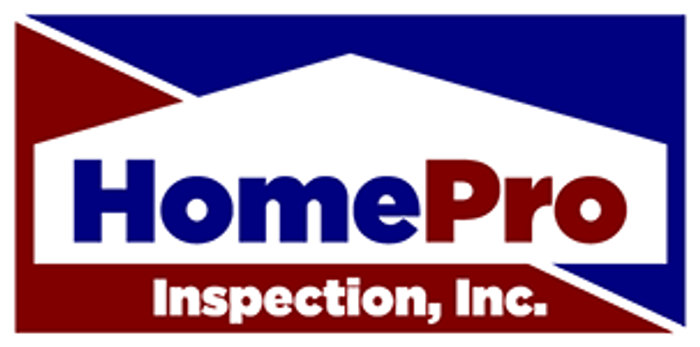

.jpg)
.jpg)
.png)
